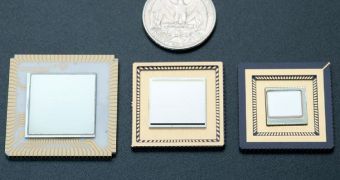The American space agency has selected two of its California-based research centers to conduct a new series of investigations into two potentially game-changing technologies related to space exploration.
The work could lead to the development of new methods for detecting and analyzing extrasolar planets, as well as to different, safer ways for transporting both humans and cargo to space, and returning them safely to Earth.
The agency selected the Jet Propulsion Laboratory (JPL), in Pasadena, and the Ames Research Center (ARC), in Moffett Field, as the main contractors for the new investigations. While ARC is managed by NASA directly, the JPL is managed by the California Institute of Technology (Caltech).
JPL experts will be in charge of developing the High Operating Temperature Infrared Sensor Demonstration, a device that relies heavily on new, advanced compound semiconductor materials.
If this study is successful, then NASA could gain access to infrared detectors that are extremely sensitive even at higher temperatures than someone would expect of such a device. Usually, IR telescopes are cooled as much as possible, as this increases their sensitivity.
Members of the JPL research team say that applications for their research are far-reaching, ranging from space exploration to national security and commercial uses. Home security systems may also be improved, the group adds.
“The technology demonstration effort is different in the fact that we're focused on affordability concurrently with performance. This technology has excellent potential for transitioning from laboratory demonstration to NASA and commercial product lines,” JPL HOTISD program manager Sarath Gunapala explains.
On the other hand, the ARC investigations group will be focused on improving heatshield technologies by a wide margin. They are in charge of analyzing the pros and cons of the Woven Thermal Protection System (WTPS). The NASA Langley Research Center is also involved in this study.
This technology was developed by the space agency in collaboration with the US textile industry, which provided the 3D weaving technique required to produce the advanced heatshield system.
“Woven TPS has the potential to significantly impact future NASA missions by changing heat shield development from a challenge to be overcome into a mission-enabling component,” LRC expert and principal investigator Ethiraj Venkatapathy says.
“By delivering improved heat shield performance and affordability, this technology will impact all future exploration missions, from the robotic science missions to Mars, Venus and Saturn to the next generation of human missions,” he concludes.

 14 DAY TRIAL //
14 DAY TRIAL //